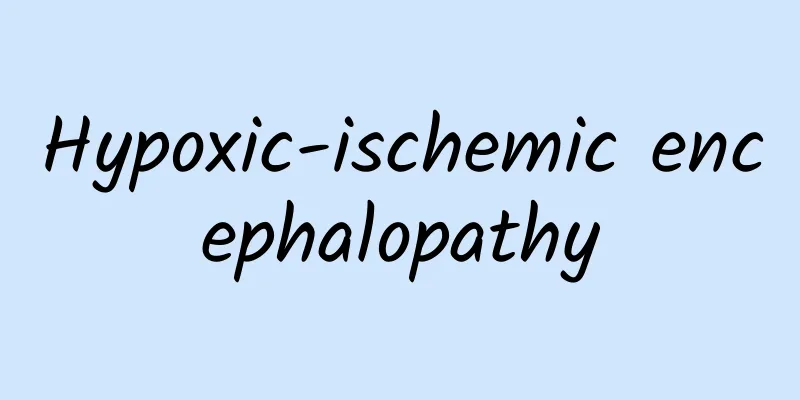Hypoxic-ischemic encephalopathy

|
Hypoxic-ischemic encephalopathy is a brain disease that is common in newborns. The health of newborn babies is of the greatest concern to parents, so many parents will be particularly worried when they see their children have hypoxic-ischemic encephalopathy. So is neonatal hypoxic-ischemic encephalopathy serious? Many people do not understand this. In this article, we will introduce you to some common knowledge about hypoxic-ischemic encephalopathy. If neonatal hypoxic-ischemic encephalopathy is not treated in time, the consequences are still serious. According to the condition of the child, we can divide hypoxic-ischemic encephalopathy into mild, moderate and severe. Let's take a look at the symptoms of hypoxic-ischemic encephalopathy of different degrees: 1. Mild The main manifestations are excitement or irritability, limb tremors, frequent spontaneous movements, active or normal hug reflex, normal muscle tone, steady breathing, flat bregma, and generally no startle. The above symptoms generally gradually alleviate after 24 hours. The EEG is normal, but imaging may not necessarily show positive changes. 2. Moderate Symptoms include drowsiness, slow reaction, decreased muscle tone, decreased spontaneous limb movements, weakened hugging and sucking reflexes, and possible startle. The tone of the anterior bregma is normal or slightly high, the pupil is constricted, and the reaction to light is unresponsive. In full-term infants, the upper limbs have more severe hypotonia than the lower limbs, indicating that the lesion involves the parasagittal sinus area; premature infants show more severe hypotonia in the lower limbs than in the upper limbs, which is caused by periventricular white matter softening. Symptoms become apparent within 24 to 72 hours after birth, and those who become worse may experience increased drowsiness or even coma, and repeated convulsions. Electroencephalogram examination may reveal field pain-like waves or voltage changes, and imaging examinations often reveal abnormalities. 3. Severe The symptoms are most obvious from birth to 72 hours old. The baby is often in a coma, with no spontaneous limb movements, soft limbs, no hugging and sucking reflexes, frequent startling, repeated respiratory arrest, high anterior fontanelle tension, unequal or dilated pupils, poor reaction to light, and a slow heart rate. This type of disease usually has a poor prognosis and a high mortality rate. Survivors often have neurological sequelae, and their electroencephalograms and imaging diagnoses are obviously abnormal. After reading the introduction in this article, everyone should have some common knowledge about the disease of hypoxic-ischemic encephalopathy. Hypoxic-ischemic encephalopathy has a great impact on the health of newborn babies, so when a child develops hypoxic-ischemic encephalopathy, he must be treated in time. |
>>: What to do if your feet are scalded by boiling water
Recommend
What to do if the buttocks are rubbed and broken
Many girls like to wear very tight pants because ...
What are the symptoms of enteritis?
After contracting enteritis, the patient may init...
Do you have dull stomach pain at 9 months of pregnancy?
The ninth month of pregnancy is often approaching...
Can I remove fat particles on my scalp?
The appearance of fat particles on the scalp is m...
Will the wound from a cesarean section split open due to coughing?
Only after a cesarean section will you need to em...
I always have chest pain before my period.
It is normal for women to experience breast pain ...
Saffron soaking water temperature
Saffron is a medicinal herb that can promote bloo...
How does Chinese medicine take the pulse?
Traditional Chinese medicine often brings a sense...
HIV antibody negative
I believe everyone has heard of the HIV virus. HI...
It feels like a needle prick when I touch my fingertips
If the tip of your finger hurts when you touch it...
How to regulate Yin deficiency constitution, Chinese medicine recommends several Chinese medicinal materials
Yin deficiency constitution is one of the nine co...
Diet therapy for chronic pharyngitis
Chronic pharyngitis is relatively common at prese...
How to treat lower extremity venous thrombosis?
Lower limb venous thrombosis is particularly comm...
What are the mandatory Category II vaccines?
Vaccination is nothing new to parents, especially...
How to cure Achilles tendon strain quickly?
In modern society, people have begun to choose fi...









